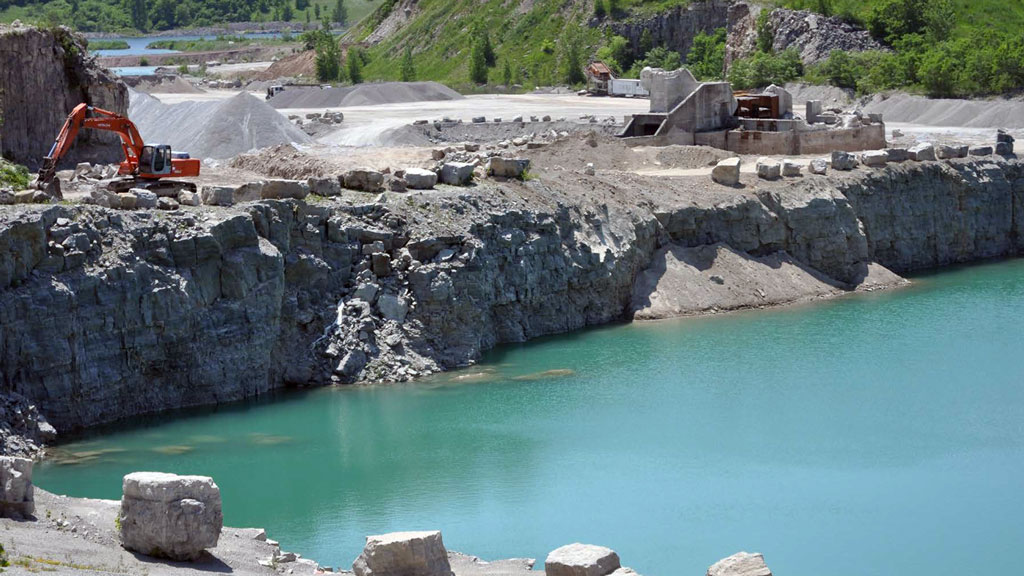A new report examines the benefits associated with close-to-market aggregate production and the economic and environmental impacts of longer haul distances such as increased costs for construction, burning more fossil fuels and generating higher emissions.
“The intent of the study was to get the importance of the industry on the radars of influencers and policy-makers,” said Norm Cheesman, executive director at the Ontario Stone, Sand and Gravel Association (OSSGA).
“If we’re going to have four million more people in this province in the next two decades we’ve got to get busy building homes, building roads, building bridges, building hospitals, building schools. Guess what you need to do that?”
The report, The Long Haul: Examining the implications of far-from-market aggregates, released in July, was commissioned by the OSSGA and prepared by the Ontario Chamber of Commerce (OCC).
“We were approached by OSSGA to take a look at this research question of what it means if pits and quarries were to be located farther away from market,” explained Ester Gerassime, OCC’s economic analyst and author of the report.
“Something that we’ve noticed especially for the Greater Toronto and Hamilton Area (GTHA) is that pits and quarries are being sited farther and farther away from market…Because of this trend we decided to investigate this and better understand what the economic and environmental implications would look like for far-from-market sites as opposed to the current close-to-market ones.”
At a very high level the study found that currently close-to-market sites are on average about 35 kilometres from wherever the market development areas are.
“If we were to take into account what the next generation of sites would look like once these sites are exhausted, they are about an additional 75 kilometres away,” said Gerassime.
“What we found was having to source aggregates from farther away would produce an increase of $169 million in transportation costs alone. That represents more than double what we are currently seeing. This is especially important for both the public sector as well as the general public in the sense that everybody uses aggregates in some form. The public sector purchases about 60 per cent of aggregates.”
The team also looked at the implications for certain infrastructure projects.
“我们发现,例如,额外的运维istance or having to bring these aggregates farther away would result in an additional $6.2 million to the cost of an average subway extension project…as well as $510,000 to the cost of an average hospital build,” Gerassime said. “It doesn’t seem like much individually but if you take this on a bigger scale, if you’re looking at all the municipalities throughout the GTHA, all of this starts to add up.”
From an environmental perspective, approximately 89,000 metric tonnes of GHG emissions would be produced because of the additional haul distance. The team also examined what that looks like from a carbon price perspective.
“What that currently amounts to is about $2.7 million in economic costs under the current carbon price of $30 per tonne,” said Gerassime. “But by 2030, when the carbon price reaches $170 per tonne, the added emissions will cost more than $15 million.”
The last part of the study presents a case study illustrating a real-life example of the regional and local implications of closing a single site, the Nelson Aggregate Co. quarry in Burlington, Ont. The site is up for license renewal.
“If they don’t get that, we decided to look at what would that mean for transportation costs as well as GHG emissions. We found that over a 10-year period that would amount to an additional $206 million in transportation costs alone…as well as 16,000 metric tonnes of Co2 emissions.”
For the construction industry, the findings are important from a planning perspective to understand where you are going to be sourcing your aggregates from in the future.
“Without the continued replacement of licensed reserves in the GTHA, you’re looking at exhausting all close-to-market aggregates within the next 10 to 15 years from now,” Gerassime noted. “It seems far away but in the aggregates world with regulations, with planning, with having to establish where the new sites and quarries are going to be and getting the appropriate approvals, all of that takes a lot of time.”
From a cost perspective, currently producers are charging the customer for transportation costs.
“We know from an objective standpoint that there are both economic and environmental costs involved and you need to be thinking about who is going to bear those additional costs and remain competitive,” she said.
Follow the author on Twitter@DCN_Angela.









Recent Comments
comments for this post are closed